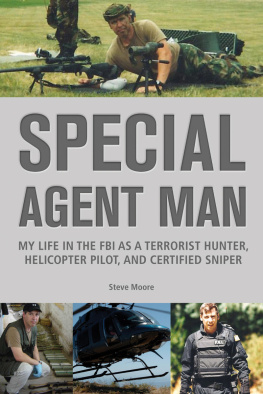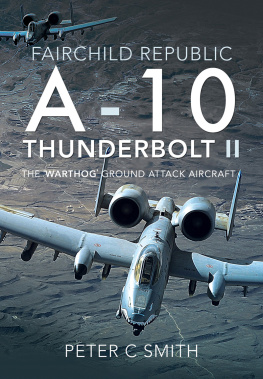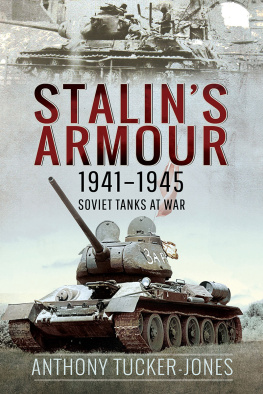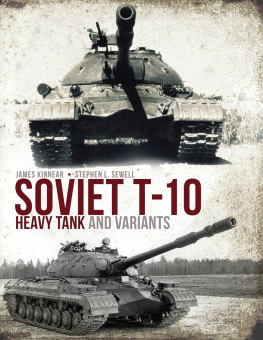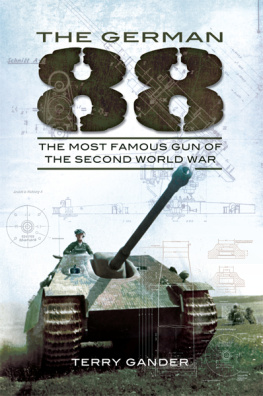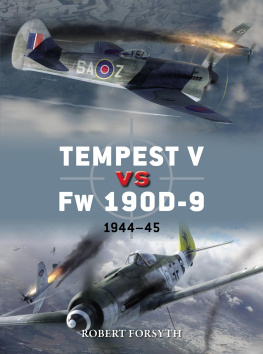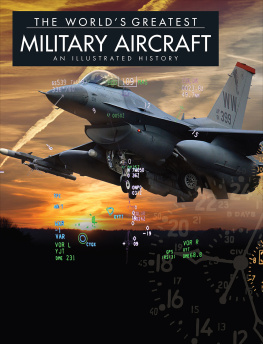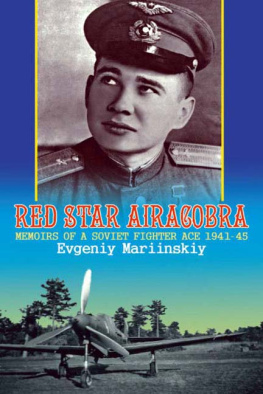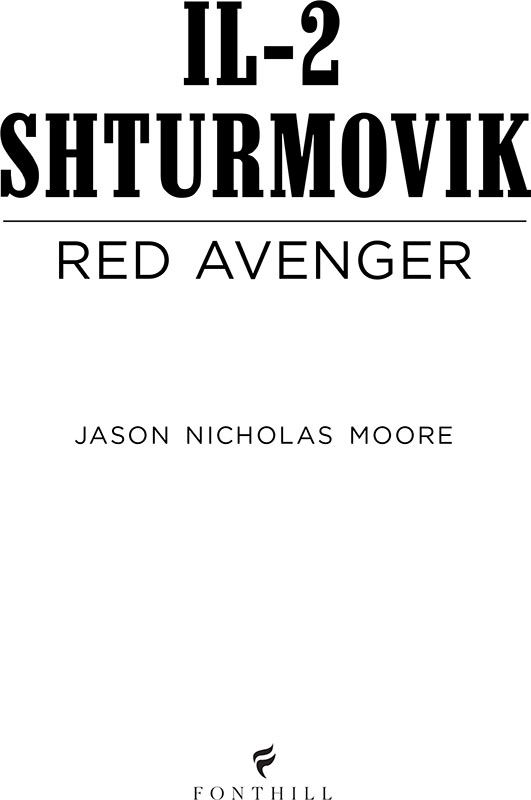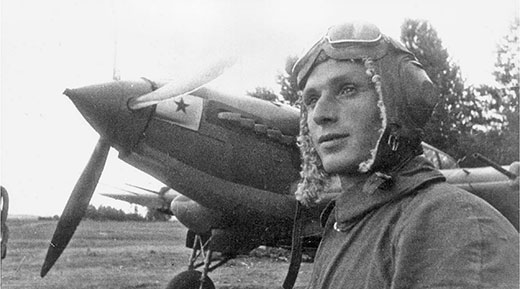Squadron Commander Senior Lieutenant Valentin Kuzmin standing in front of his Il-2, of the 949th ShAP, taken on 11 August 1944 on the Baltic Front. He shot down two German aircraft and was given the Hero of the Soviet Union award on 29 April 1945. (Viktor Kulikovs collection)
Fonthill Media Language Policy
Fonthill Media publishes in the international English language market. One language edition is published worldwide. As there are minor differences in spelling and presentation, especially with regard to American English and British English, a policy is necessary to define which form of English to use. The Fonthill Policy is to use the form of English used by the author. Jason Nicholas Moore was born and educated in the United States and now lives in the United States but prefers to write in British English and therefore British English has been adopted in this publication.
Fonthill Media Limited
Fonthill Media LLC
www.fonthillmedia.com
First published in the United Kingdom and the United States of America 2015
British Library Cataloguing in Publication Data:
A catalogue record for this book is available from the British Library
Copyright Jason Nicholas Moore 2015
ISBN 978-1-62545-042-5
The right of Jason Nicholas Moore to be identified as the author of this work has been asserted by him in accordance with the Copyright, Designs and Patents Act 1988.
All rights reserved. No part of this publication may be reproduced, stored in a retrieval system or transmitted in any form or by any means, electronic, mechanical, photocopying, recording or otherwise, without prior permission in writing from Fonthill Media Limited
Typeset in 10pt on 13pt Minion Pro
Printed and bound in England
Contents
Landmarks
I gratefully acknowledge the kind assistance of Massimo Tessitori of sovietwarplanes.com, Paul Flint, aka Dark Green Man, Konstantin Lesnikov, and Mario Holly for their help on the Il-2s camouflage and colours. I also wish to thank Mr. Artem Drabkin for the use of his interviews of two Il-2 pilots. I give great thanks to Nigel Eastaway OBE and the Russian Aviation Resource Trust (RART) for the use of their fine photographs of the Il-2. Without the help of the aforementioned people and institutions, this book would have been much harder, even impossible to complete. I would like to give a special thank you to Mike Williams of Britmodeller.com (a fine site), who introduced me to the Fonthill Media editor Jay Slater (a special thank you goes out to you, Jay, also, and all the fine folk at Fonthill for your hard work in turning the manuscript into a presentable book). I would also like to especially thank Massimo Tessitori (again) for the fine artwork he prepared, based in many cases upon rare photographs kindly provided to him by Aleksandr Ruchkovsky. Without Massimos fine and accurate work this book would have been much the poorer. And of course I would like to thank my family for their moral support, financial assistance, and forbearance as I pursued this literary work. Hopefully Ive made them proud with it. Finally, any mistakes and errors in this work are my own.
AAAnti-aircraft artillery, sometimes abbreviated to AAA. Another name for this is the German flak (which is the name I will normally use throughout this booksee entry below). These were guns, ranging from rifle calibre guns to 105-mm cannons, that were used against aircraft. The larger cannons were of little use against the Shturmoviks, as the cannons moved too slowly to track the low-flying Il-2s, but the smaller calibre guns and cannons proved to be a mortal threat to the Il-2 throughout the war.
Air Armythe largest division of the Red Air Force (VVS). There were no Air Armies solely equipped with the Il-2. VA was the Soviet abbreviation.
Arrowtranslated nickname for the swept-winged two-seater Il-2 (see So Strelkoi entry). This word is commonly used throughout this work to refer to the swept-winged two-seater Il-2.
AVMFAviatsionniy Voyenno Morskovo Flota, the Naval Air Forces. Il-2s were used both for anti-shipping duties and close air support.
AxisWhen Mussolini publicly announced the signing of a treaty between Germany and Italy, on 1 November, he proclaimed the creation of a RomeBerlin axis. Later this alliance would include Japan along with Germany and Italy as the parties in the Tripartite Pact, which was signed on 27 September 1940 in Berlin. Other nations, such as Hungary, Romania, and client states such as Slovakia also became parties to this alliance. Sometimes the word Axis will be used in this work to refer to the forces fighting against the Soviets, which included Croatian, Finnish, German, Hungarian Italian, Romanian, Slovakian, and Croatian forces, and even a volunteer Spanish division (Division Azul[the] Blue Division).
Bezanta synthetic leather that was used by the Soviets for among other items, to cover seat cushions, or portions of the landing gear.
BlitzkriegLightning War in German. This was the name given to the German method of war, whereby the enemy were to be overwhelmed by the speed of armoured columns striking deep through the enemys lines, supported by infantry and the heavy use of aircraft, such as the dive bombing Ju-87. It was this method of warfare that worked so well initially against the Soviets during Operation Barbarossa (see below), and which the Soviets adopted and adapted for their own use, particularly in Operation Bagration (the liberation of Byelorussia).
Borttactical or aircraft number. Most Il-2s bore some sort of aircraft number, on the tail or fuselage, or much more rarely, both. Very early in the war, occasionally the rudder would bear two different numbers. The numbers were typically red and/or white, were normally one or two digits (rarely three), and the style varied from regiment to regiment. These were not applied at the factory, but in the field by the regiments (polkssee below). They apparently had nothing to do with the factory applied serial numbers (see below). Although you will often see it in colour profiles, yellow was rarely used, as this was the Axis identification colour on the Eastern Front.
CASclose air support, often referred to as ground attack, the main duty of the Shturmovik. This consisted of support for the Red Army ground troops and tank divisions, which involved attacking the German units the troops were engaged with. This and the terms ground attack or ground support are used interchangeably in this volume.
CMFBlack Sea Fleet. One of the naval fleets that used the Il-2. It was based originally in Sevastopol.
Design BureauKnown in Russian under the acronym of OKB (see OKB entry below).
DoskaRussian for board; it referred to the straight-winged versions, both single and two-seaters.
Eskadriylyasquadron. Consisted at first of ten aeroplanes, which was then increased to fourteen, three of these making up a polk (see entry below).
Flaka contraction of the German term flugzeugabwehrkanone, or aircraft defence cannon. This is the same as anti-aircraft artillery (AA) and is the term I will commonly use throughout this book.
Frontal Aviationused to describe the aviation units that operated close to the frontlines in support of the ground troops. The Il-2s, for example, often operated within ten miles of the frontline.
GKOState Committee for Defence. From






